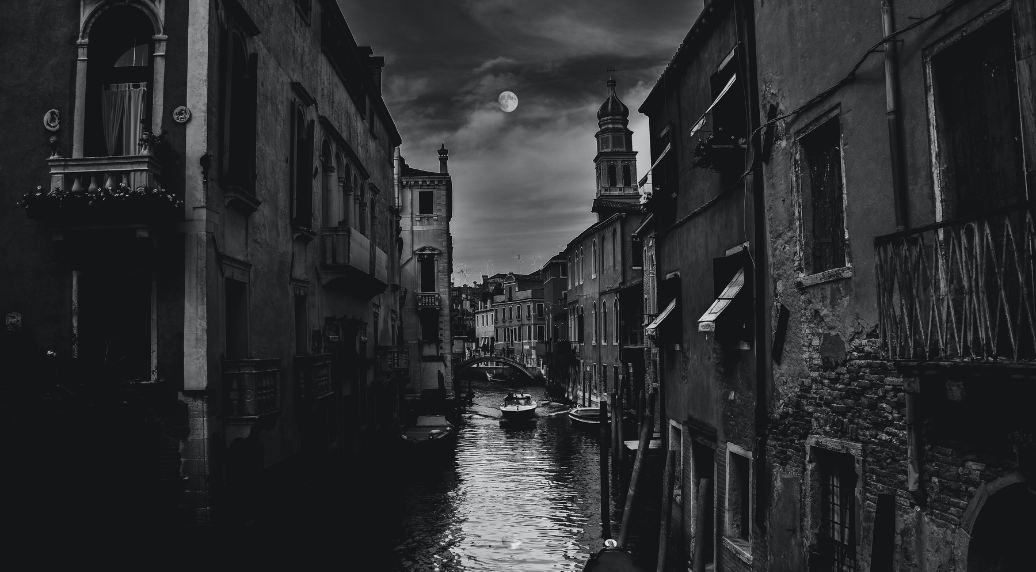Kenneth Branagh is by no means a first-time director. He’s not even new to the task of bringing books and plays to the screen or of directing himself. And yet his Agatha Christie adaptations (which he directs and stars in) have been fairly middling, with his second Poirot feature Death on the Nile managing to be even more disappointing than his first foray, Murder on the Orient Express. With his third adaptation, A Haunting in Venice, he seems to be finding his feet.
Maybe it helped that he chose a lesser-known Christie book and only based it rather loosely on the original story and characters. His regular Poirot movie scriptwriter, Michael Green, is back on writing duty, and I loved the reflective dialogue, but also appreciated his adherence to the whodunnit formula. However, there was one big plot point I had a MAJOR issue with, but I’ll get to that. While the probing of Poirot’s character continues (something I disliked in the previous movies), it’s much subtler here and the character feels more like the enigmatic detective we know and love.
View this post on Instagram
The source material for A Haunting in Venice is Hallowe’en Party. Enough time has passed since I read it that I remembered very little and could go in with a fresh feeling of suspense, although halfway through (despite the many changes from the book) I did remember whodunnit (something the movie does not change).
Something that does change is the location. But luckily this time, it’s not used as an excuse to give us pretty but pointless visuals. Despite being set in Venice, the action is mostly contained to a spooky palazzo, thanks to a murder that forces the attendees of a séance to remain locked up until the murderer can be revealed. This confined-setting situation is one I absolutely adore and it’s what – in classic murder mystery style – gives Poirot a chance to question each character/suspect one by one.
New trailer for ‘A HAUNTING IN VENICE’ has been released.
Starring Kenneth Branagh, Michelle Yeoh, Jamie Dornan, Emma Laird, Tina Fey, and Kelly Reilly.
— Film Updates (@FilmUpdates) July 19, 2023
The script, as well as the cinematography, lean heavily to dark and sinister tones. It’s a fitting tribute to the fact that Christie often peppered her tales with hauntings, ghosts, witches, séances, and other similarly supernatural elements – even if she tended to rationally explain them away. But it also gives the film a chance to be a modern horror film. The movie may be set in 1947, but the soggy-haired girls in mirrors, crashing teacups, and doors that fly open of their own accord made it feel like part of what the horror genre has been in recent decades. Given this new direction from Branagh it’s made me eager to know which Christie he’ll adapt next and how he’ll approach it. He’s also starting to come into his own as Poirot, helped along by subtler emotional beats rather than tiresome flashback scenes.
Before I move on to the rest of the cast I want to put aside Tina Fey and the character she plays, Ariadne Oliver. Cards on the table: I’m not a fan of the actress, and I’m distraught that they made Ms. Oliver American. What marred the whole thing even more (and beware, because this is something of a spoiler) is the reprehensible and almost-unforgivable plot point that sees Oliver betray Poirot … and for a silly, selfish deus ex machina. Furthermore, while I understand why (bar a light laugh or two) Branagh steers clear of humour in this adaptation, I then can’t imagine what would possess him to cast a comedy actress if he wasn’t going to use her for that purpose. That’s not to say that Fey should only do comedy, but Oliver has always been inherently amusing. And while that may not have been suitable here, in this film Oliver is thinly sketched as far as drama goes, and the few funny lines she does have fall flat.
View this post on Instagram
The rest of the cast is fantastic. They look the part, full of drama and melancholy, perfectly fitting into the sinister circumstances in which they are trapped. Kelly Reilly and Michelle Yeoh are ethereal as Rowena Drake and Joyce Reynolds. Despite all the kerfuffle around Jamie Dornan, I’ve never really watched him in much, and I was impressed with his haunted Dr. Leslie Ferrier. The same is true of Kyle Allen as Maxime Gerard and Jude Hill as the precocious Leopold Ferrier. But the standout for me was Camille Cottin as Olga Seminoff, whose wide-eyed horror at the goings-on speaks of secrets and grief.
What stands out more than anything else in this film is the incredible score by Hildur Guðnadóttir. Her music creates melancholy, dread, and suspense, perfectly accompanying the look and feel of the film while underscoring each character’s drama. And just as important: Guðnadóttir and Branagh know when to hold back, allowing silence to also create melancholy, dread, and suspense in its turn.
It’s not a perfect film, but then Christie herself would tell you Poirot was hardly perfect. But the spooky tone is perfect for the time of year, it’s perfect for Christie, and it’s a fresh take on the way murder mysteries are often told.
A Haunting in Venice is in cinemas now.
